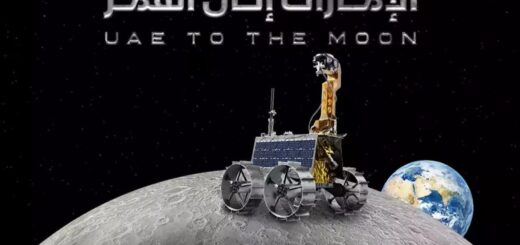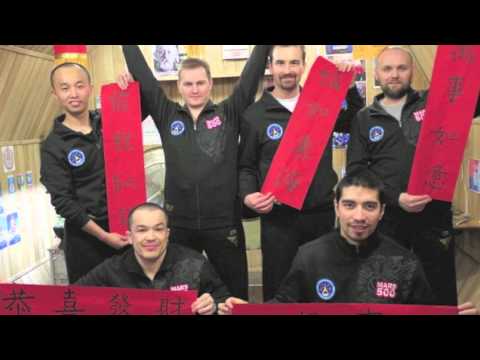How China is taking on the world in space
This chart shows a recent survey ofsatellites and space junk in low-earthorbits listed by of a countryresponsible for creating it the thirdcountry might be a surprise to you,China has left almost as much debris asAmerica and Russia despite having a much shorter history in space in fact most ofthis was from just one missile test in2007 when China fired a kinetic killvehicle that one of its own retiredweather satellites. The missile hit at arelative speed of about 8 km/sshattering the satellite into more than900 large pieces and almost 35,000 smallobjects, many of these will remain inorbit for decades or even centuries. Nowthe last time I mentioned China’s 2007missile test I got some flak in thecomments for picking on Chinaso yes other nations also have donesimilar things and its legacy of spacejunk is typical of early missions inmany national space programs. In the I950’s global powers faced thelikelihood that below Earth orbit wouldbecome the new battleground overhead andcontrol of that space will be a decidingfactor in future wars. In 1958Chairman Mao tse-tung announced a planto develop a space launch capabilityfrom a country’s ballistic missileprogram. However when relations between theSoviet Union and China cooled in thelate 1950s and early 60s the Russiantechnical assistance also went away. Although the Chinese economy grew slowlyin the 60s and 70s they did become thefifth nation to independently developand launch their own satellite systemwith the long march one rocket in April1970. Over the next two decadesplans for manned space flight were puton hold but the space launches continuedto deploy mostly Chinese satellites infact today there have been 258 launchesusing the Long March family of rocketswith a success rate of 94. 6%. It took until 1992 before the leadershipof a modernized china saw value in aspace programas a way to stimulate and demonstrateadvances in engineering and science. In1992 project 921 was approved itsobjective to establish a manned Chinesepresence in space the first step of anew program was to develop a human ratedcapsule. ‘Shenzhou’ meaning divine vessel flew a successful unmanned test flightin November 1999. Two years later ‘Shenzhou 2’ – carried animals on board to testthe life-support systems a monkey a doga rabbit and some snails despitesetbacks progress on Shenzhou developed steadily and on October 15th 2003 YangLiwei a first Taikonaut traveled onboard Shenzhou 5 making China the thirdnation to independently carry a humaninto space. Now the Mandarin word forspace is taikong add the Western wordnaut and you have Taikonaut theChinese version of astronaut. Liwei completed 14 orbits of the earth in alittle over 21 hours celebrating bywaving the flags of the People’sRepublic of China and the United Nationsto the onboard cameras the next phase ofproject 921 was to establish a smallspace station. By 2011 for Chinese spaceagency had constructed and prepared theeight and a half ton tiangong 1 or’Heavenly Palace’. the Space Lab wascapable of supporting three Taikonaut’sfor scientific missions up to a fewweeks. The interior was painted in twocolors to represent the sky and theground helping the Taikonauts toorientate themselves in microgravity. However the main purpose of a prototypewas as a target vehicle to test dockingwith the Shenzhou capsulebut while the Tiangong-1 wascompleting his final ground tests theChinese space agency faced a new problem. On August the 18th a Long March 2Crocket suffered a failure during thesecond stage engine burn and it was lost. If the same thing happened during thelaunch of a Tiangong-1 or a mannedmission it would be disastrous for theentire space program. Engineers hurriedlymade more than a 170 modificationsto the Long March 2 in just six weeksresulting in the new “FT-1” version whichwas approved to carry China’s firstSpace Lab. On September 29th 2011 heavenlyPalace successfully launched into itstarget orbit in June 2012 the first crewof three Taikonauts arrived includingChina’s first woman in space Lu Yang. The Shenzhou 9 spacecraft dockedsuccessfully and remained at Tiangong-1for 11 days. After another man visit in2013Tiangong-1 was put into sleep mode andits orbit has been gradually decayingever since. But it’s almost time for thefirst ‘Heavenly Palace’ to come back downto earth. In the early months of 2018 theinter-agency space debris CoordinationCommittee will track the space labsreentry to further refine its predictionof where it might end up. In September2016 a second orbital lab Tiangong-2launched from the Jing Quang Launch Center in the Gobi Desert to be joined a monthlater by a two-man crew aboard atShenzhou 11 with a similar size anddesign to the first Heavenly Palace Tiangong-2 – was able to support TaikonautsJing Hipong and Chen Dong for 30days. During this time they tested arange of scientific instrumentsincluding the first ever cold atomicclock experiment in space which operatedat a fraction of degree above absolutezero, so accurate but it only loses onesecond every billion years. As well assetting up an independent manned spaceprogram China is also breaking newground with a serious high-tech moonLanders. On the 1st of December 2013 a1200 kilogram Lander named Chang 3launched on a mission to the moon. Fivedays after a launch Chang 3 entered anorbit approaching a hundred kilometersaltitude above all in the lunar surface. After a second decelerating burn on the 14thof December the lander descended to justa hundred meters altitude above theMare Imbrium, hovering in positionwhilst it’s onboard cameras locatedlanding site. Executing a 12-minutelanding sequenceChang 3 touchdowned successfully, thefirst lunar soft landing in 37 years. Butthe mission was far from over. Like the soviet Lunokhod rovers of theearly 1970s, chang 3 was equipped with anuclear-powered heating unit to survivethe harsh lunar nights. As well ashaving an array of scientificinstruments the Chinese Lander alsocarried a 140 kilogramRover called Yutu which explored thevolcanic crater near the landing site. The rover was named by public poll inChinese mythology,Yutu was the pet rabbit of Chang themoon goddess so in the West we know therover as the Jade rabbit, moon rabbit orjust rabbit. But this particular rabbitcame to a bit of a sticky intermittentend in January 2014 when it had a”mechanical control abnormality” according to the chinese state media although manyin the West believe it fell victim to behighly unforgiving the lunar dustjamming its mechanics. It intermittentlycommunicated back again with earth upuntil March 2015 when it finally fellsilent. But China aims to go even furtherin 2018 when the backup lander of aChang 3 mission is scheduled to do atouchdown on the far side of a moon asChang 4. This will be an impressivefirst, all the American and Soviet softlandings were executed in direct line ofsight with the earth. The proposedlanding site is the ‘South Pole-Aitken basin’a candidate for the largest impactcrater in the solar system with a diameterof two and a half thousand kilometers. Here the Chinese Lander will be able toexamine 15 kilometers of exposed crusthopefully uncovering evidence to help usunderstand the moon’s violent pastbetter. In 2016 China launched 22 rocketsthat’s more than the Russians and thesame number as the US, it has plans for athird space station and its own spacetelescope in the mid-2020swith aims to put men on the moon by themid 2030s, so it looks like NASA, ESAand SpaceX will have some serious competition in the nearfuture. So thanks watching and thisepisode shirt was the Navy Paisley bymadcap England and his available formAtomretro. com with worldwide shipping fromhere in the UK. Don’t forget we also havethe curious droid Facebook page and alsolike to thank all of our patrons fortheir ongoing support and if yourinterest in becoming patreon then youcan find out more by clicking on thelink now showing. So once again thanksfor watching and please subscribe, rateand share.













